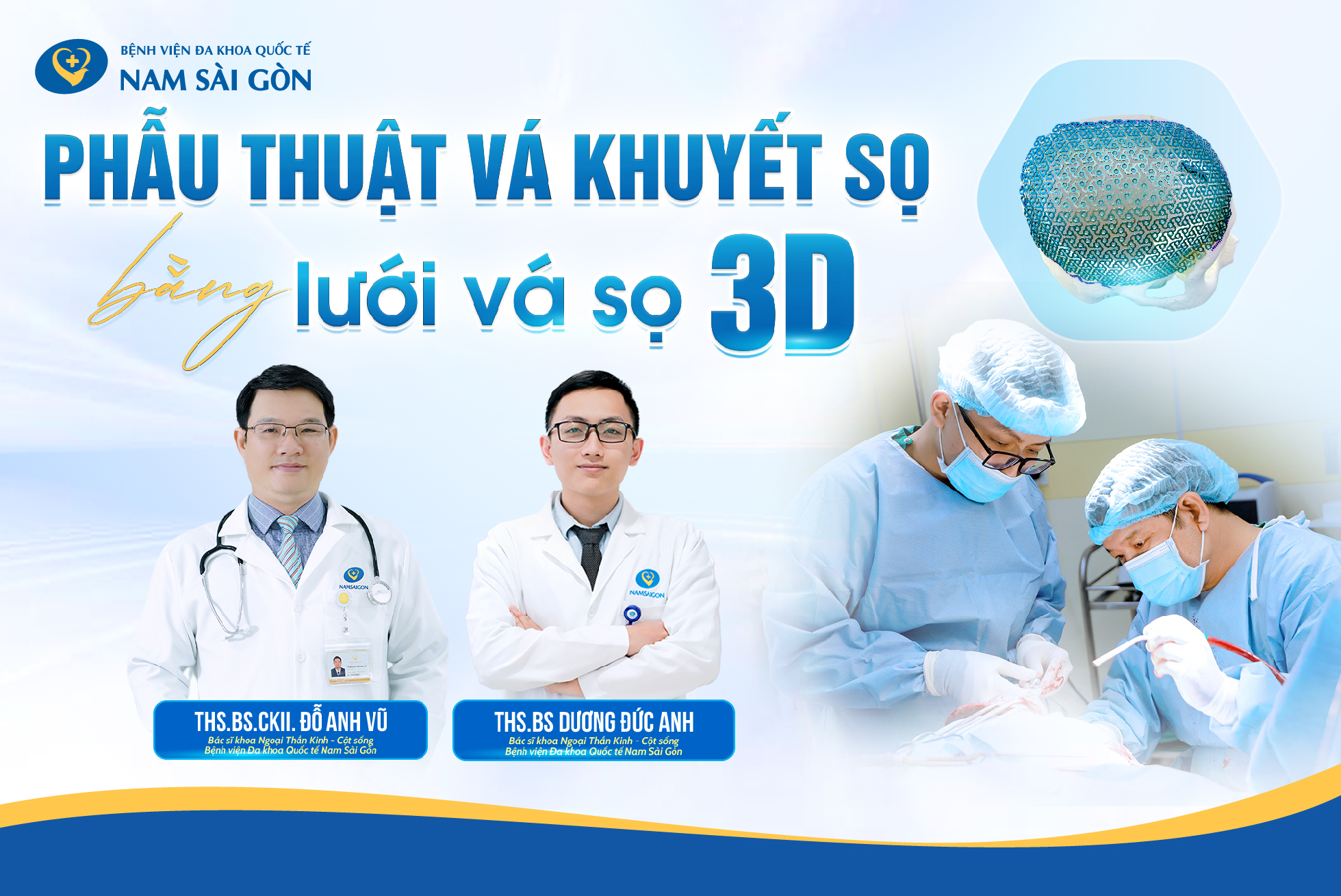CRANIAL DEFECT REPAIR USING 3D TITANIUM MESH IMPLANTS
-
Author: BỆNH VIỆN ĐA KHOA QUỐC TẾ NAM SÀI GÒN
-
03/11/2023
-
218
In life-threatening intracranial conditions such as traumatic brain injury or stroke, neurosurgeons often perform decompressive craniectomy to relieve elevated intracranial pressure and save the patient’s life. In many such cases, especially in countries like Vietnam where traffic accidents and strokes are common, patients are discharged with visible cranial deformities due to missing bone sections. Once their condition stabilizes, cranioplasty is performed to restore the skull’s integrity — protecting the brain, improving aesthetic appearance, and helping patients regain confidence in daily life.
Two Main Techniques In Cranial Reconstruction
Currently, there are two major approaches to cranioplasty:
- Autologous bone grafting (using the patient’s own preserved skull bone)
- Artificial implants (synthetic materials)
Autologous bone grafting is often used if the bone flap was preserved under proper conditions (typically for 3–6 months in a bone bank). However, this technique poses risks such as infection or bone resorption, which may require removal of the graft and later replacement with an artificial implant.
To minimize risks, neurosurgeons conduct thorough evaluations before surgery. For high-risk cases, synthetic reconstruction using 3D-printed titanium mesh has become the optimal solution. With modern technology, this method allows creation of custom-fitted implants that match the patient’s exact cranial defect size and shape, ensuring excellent cosmetic and functional results.
Additional advantages include:
- Shorter surgical time
- Reduced blood loss
- Lower infection risk
- Ability to reconstruct complex areas such as the orbital rim or temporal fossa, where manual shaping is difficult

At the Neurosurgery & Spine Department of Nam Sai Gon International General Hospital, 3D titanium mesh cranioplasty has been routinely implemented. Patients typically recover quickly and are discharged within five days post-surgery.
Patient A., who underwent decompressive craniectomy after a stroke four months earlier, returned for cranial defect repair using 3D mesh. “After completing rehabilitation therapy, the doctors said that to support a full recovery, my husband would need cranioplasty”, shared his wife. “We were referred to Dr. Vu at Nam Sai Gon International General Hospital. Amazingly, just one day after surgery, he was awake and able to begin physiotherapy. We’re very hopeful for his recovery“.
Another case, Mr. T., 28 years old from Cambodia, had sustained a severe traffic accident seven months earlier and returned for cranial reconstruction. He successfully underwent 3D mesh cranioplasty, recovered well, and was discharged five days later in stable condition.

According to Dr. Do Anh Vu, MMed, Specialist Level II, who directly performed the surgeries:
“Using 3D-printed titanium mesh not only reduces operating time but also allows surgeons to visualize the implant’s exact shape and position preoperatively. This enables accurate reconstruction of anatomically complex regions like the orbital cavity or temporal fossa — areas that are extremely difficult to shape manually”.

Nam Sai Gon International General Hospital accepts both public health insurance and private health insurance.
Nam Sai Gon International General Hospital
No. 88, Street No. 8, Trung Son Residential Area, Binh Hung Commune, Ho Chi Minh City.
Hotline: 18006767
info@nih.com.vn
Last updated: 16:11 07/08/2025






